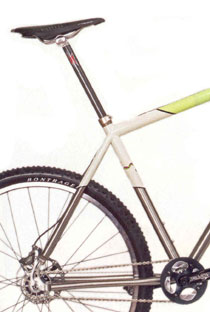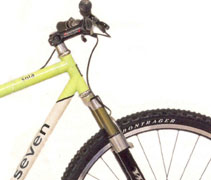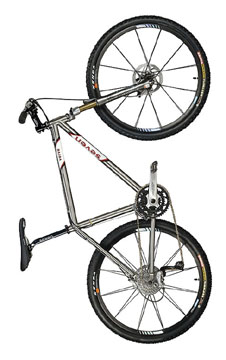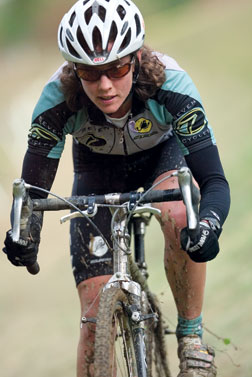by Richard Fries
Some heavily ridden roads draw riders out of Boston’s mean streets to the countryside. One of the portals for these Boston escapees is Massachusetts Avenue, which runs from downtown through Cambridge and Arlington before reaching its terminus in Lexington. To sound local, simply refer to it as “Mass Ave.”
This is the same route used by William Dawes on horseback to warn the folks in Lexington about approaching British troops in 1775. Unfortunately, the name “Dawes” works poorly for poets, so Paul Revere, who arrived in Lexington via Medford, got the fame.

For hard-core cyclists, group rides roll out to Concord and points beyond with amazing regularity. But these mini pelotons have angered the local residents and raised blood pressure amongst the motorists. We find this curious because the Concord residents shot down a proposal to extend the Minuteman rail trail through their community; as a result they have thousands of cyclists on their roads during rush hour.
For this ride, we get to Concord using an entirely different route, with 80 percent of the ride off-road. Please note this is not single track. Thanks to recent developments along the Minuteman National Historic Park, we avoid the motorists almost entirely and get to Concord on a route perfect for beginners and kids, and hysterically fun for experienced riders. You won’t work on your max heart rate, but you probably can check off some birds from the back page of your Peterson Guide and brush up on your Revolutionary War history. To cultivate a romance, bring a picnic.
This ride features three basic courses: The Minuteman Bikeway, a paved path constructed along a rail bed; the Minuteman National Historic Park, a gravel path built parallel to Route 2A along the route used by both the British and American forces on April 19, 1775; and the abandoned Boston and Maine railbed that connects Concord to Bedford by way of the Great Meadow National Wildlife Sanctuary.
We do this ride quite frequently on stock road bikes with never as much as a puncture. A true cross-country bike for this route is overkill; suspension is hardly needed. The perfect bike for this ride is a cyclocross rig. And we got one of the best for the job: aSeven Cycles Mudhoney. This is an extravagant machine for a rather blunt job.
But the folks at Seven Cycles and their dealer, Ace Wheelworks in Somerville, always take good care of us. Ace is the urban sister of the hallowed Belmont Wheelworks. About one-fifth the size of Belmont, Ace Wheelworks features as much soul as any shop in America. Just outside of Davis Square, this shop is stuffed with bikes. With work-stations right behind the counter, one often has several staff in on the conversation. The heart of Ace Wheelworks is the fabled John Allis. He won an amateur classic in France in 1964, thereby setting the trajectory that resulted in Greg LeMond, Andy Hampsten, Tyler Hamilton and Lance Armstrong. John will disagree; others will not.
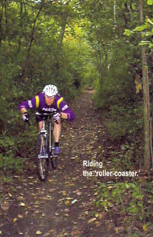
Ace is a place that tests every trendy development in cycling. These folks still value wood, wool, leather and steel. Seven Cycles, masters at titanium, have passed the muster.
When riding a cyclocross bike, understand the entire machine is a few centimeters higher. This initially affects the fit and feel, but you’ll come to respect the design. Unlike mountain bikes; these machines maintain the basics of road design with a tight wheelbase that helps in turns. Our Mudhoney weighed less than 20 pounds, with a responsive rear triangle and Wound Up carbon fork. The Wound Up fork prevents getting an inflated front wheel on and off easily; a pain in the ass for folks using car racks. And were we to spec the machine, top mount brake lever—increasingly common on ‘cross bikes—would have been there. But components are easy to change; frame design is a different story.
This machine absolutely danced for us on this ride. By riding during a weekday, we had the trail to ourselves and got to light it up on the more technical elements of a course where horses, pedestrians, and dogs may make up the user group. We rode with road pedals just to prove this is a ride that does not require any dismounts.
We opened on the Minuteman Bikeway, which starts in Somerville’s Davis Square. Note that upon return, we can have a pint at Redbone’s Barbecue, where they offer bike valet service. We used the connectors that start at the Davis Square subway station, where bikes are welcome, snakes across Mass. Ave. and through some parks to the Alewife Station, also a convenient start point for out-of-towners. From there the path starts in earnest, initially running along Mass. Ave. to the south, but crossing it in a rather perplexing fashion in Arlington Center, where several group rides form. On the northern side of Mass. Avenue is where the longer portion of the path begins. It runs all the way to Bedford. But we get off in Lexington Center, another meeting point for cyclists, and get onto Mass. Ave. for one of the few road portions of this ride. At the famous Minuteman Statue we bear left and follow Mass. Ave., keeping the Battle Green on our right. We climb out of Lexington Center and descend to the Interstate 95 overpass.
Get ready as this is the most dangerous part of the ride: right after the overpass make a hard right on Wood Street and then make an immediate left onto Old Massachusetts Avenue. And there stands the entrance to the Minuteman National Historic Park on your right. Pound up the gravel path, being careful and polite with pedestrians, and soak in the history.
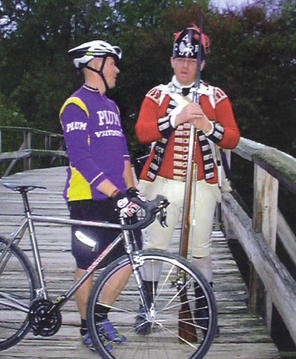
This linear park is a jewel of the Park Service. For cyclists, the best feature is the newly unveiled tunnel that runs beneath the Hanscom Airfield access road. For history nuts, there are plaques, restored homes and farms returned to the exact state they were in during 1775. And kids love that flocks of sheep have even been added. In wetland areas, the path is routed on, to boardwalks where signs ask cyclists to walk. We unclip and roll at sidewalk pace for these sections; walking on cleats would prove more dangerous than riding. We simply honor all pedestrians along this route.
We follow the path to Meriam’s Corner where this patch of the national park ends. By crossing Old Bedford Road, we continue along the path and make a connection through a park to Route 62. There we turn left, complete the next on-road section of the ride. It’s only about one mile down to Concord Center, which has all sorts amenities to the left. But as we enter the center, we turn right on Monument and roll the short distance to the Old North Bridge, another patch of the national park. This is great for picnics and getting to know the resident Redcoat or Minuteman posted there for Q and A.
But this is where the secret fun starts. Across from the Old North Bridge entrance on Monument, and about 200 meters towards Concord Center, one will find the entrance to the abandoned rail bed, marked by massive boulders and narrow path.
Duck in the woods to find one of Greater Boston’s special bikeways. Although not paved, this hard-packed route has some muddy sections as you roll along the edge of the Great Meadows. This path is unique; it knifes between the national park, a wildlife refuge, and the Hanscom Air Force base, which has some amazing air shows every year.
Although overgrown in a few sections, this path receives sufficient traffic to barely maintain “beaten” status.
After crossing pack across Route 62 (Bedford Road), the path a unique element, with an origin difficult to explain. The path starts to undulate a rhythmic string of hump after hump after hump. This fantastic roller coaster, created by some mysterious erosion in the rail bed, brings fast riders off the ground with each jump; and brings slow riders to an infectious state of grinning. Kids squeal with delight. After enjoying that section the path empties out on Railroad Avenue in Bedford, pointed right to the northern terminus of the Minuteman Bikeway, just a quarter mile ahead.
Still giggling from the roller coaster rail bed, we pedaled onto the asphalt of the bikeway as the mud splattered off the tread of the Seven Mudhoney. And we coast homeward, side by side, talking about guns or planes or birds or Paul Revere’s bust. But after this ride we never seem to talk about the jerk who laid on the horn.

